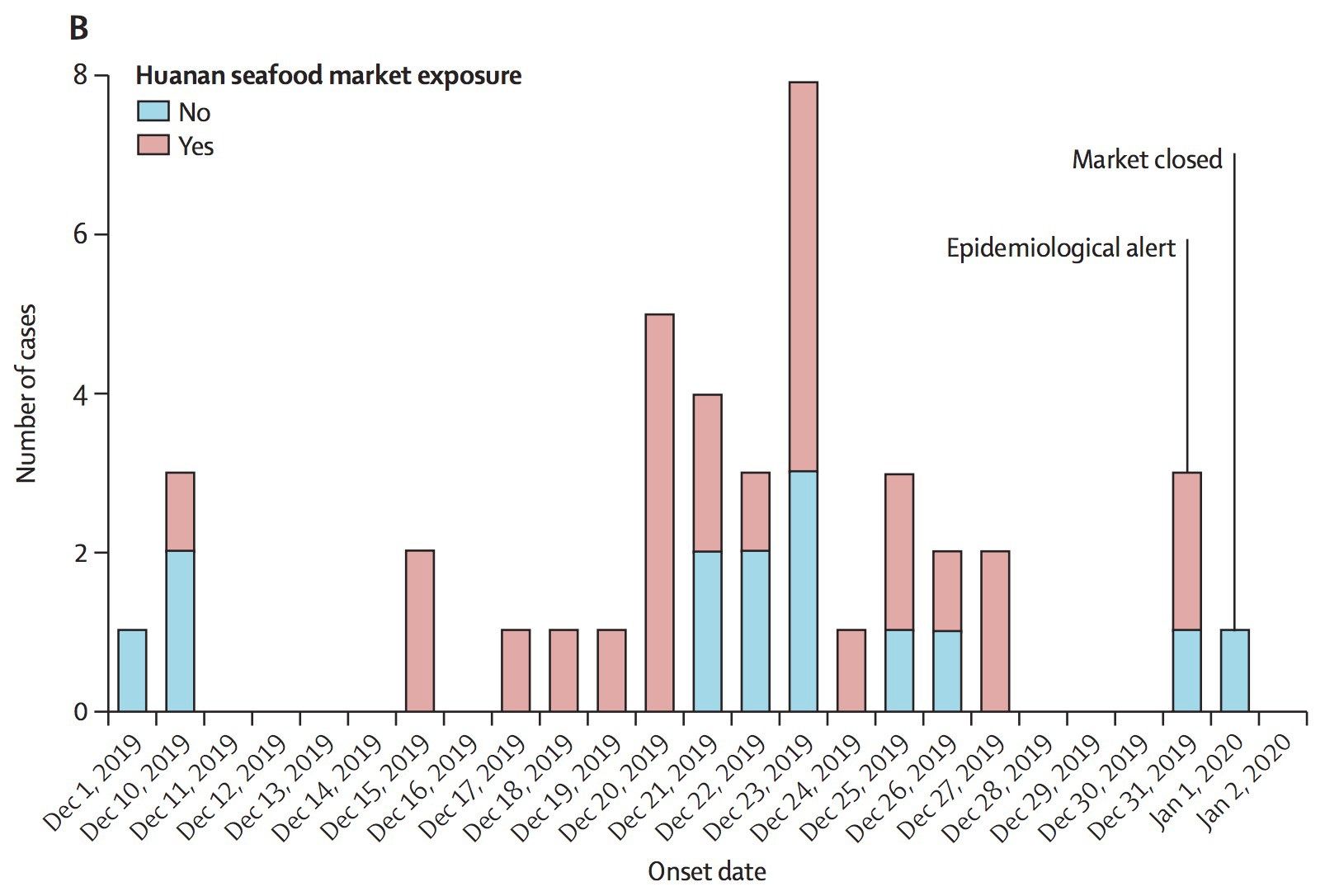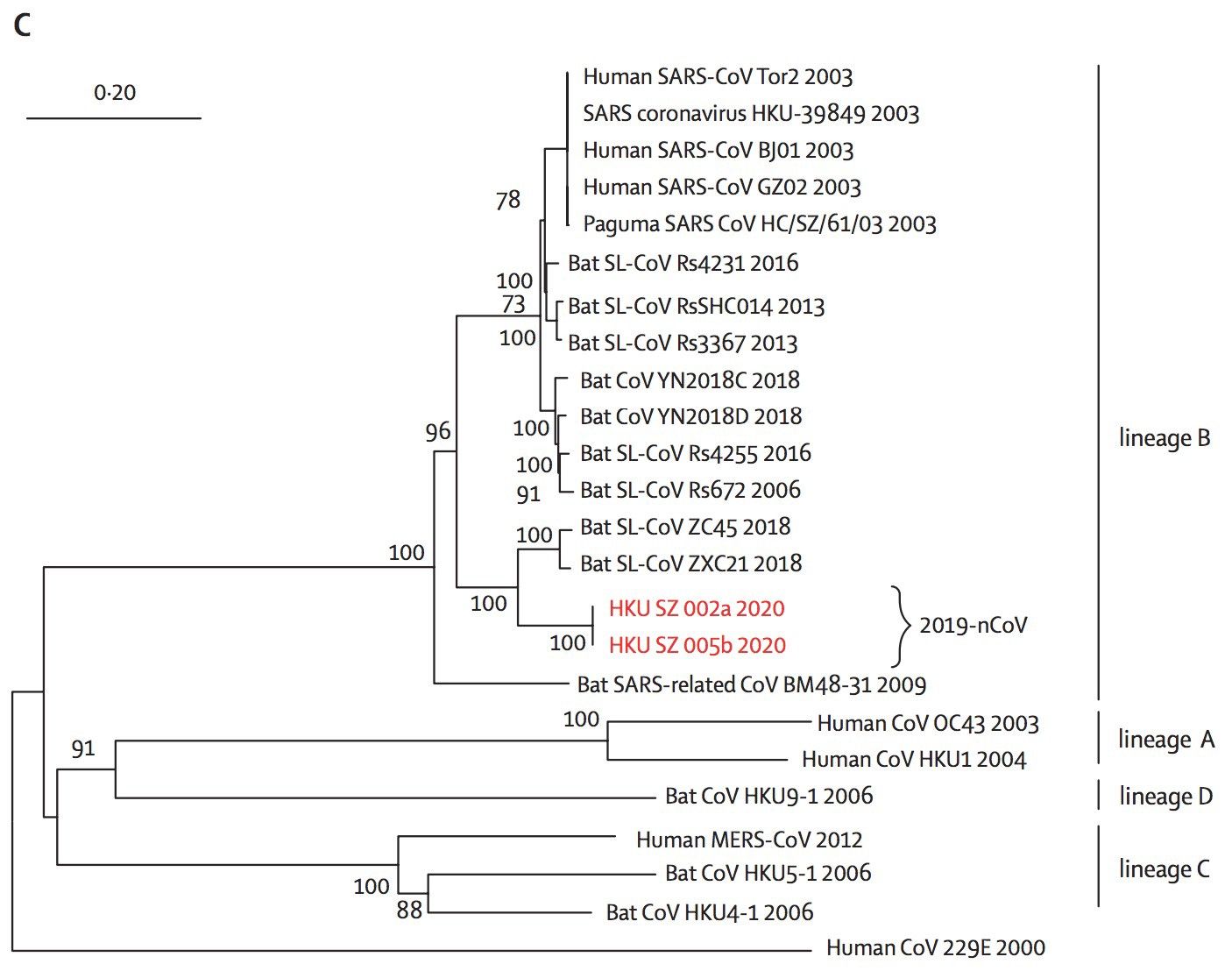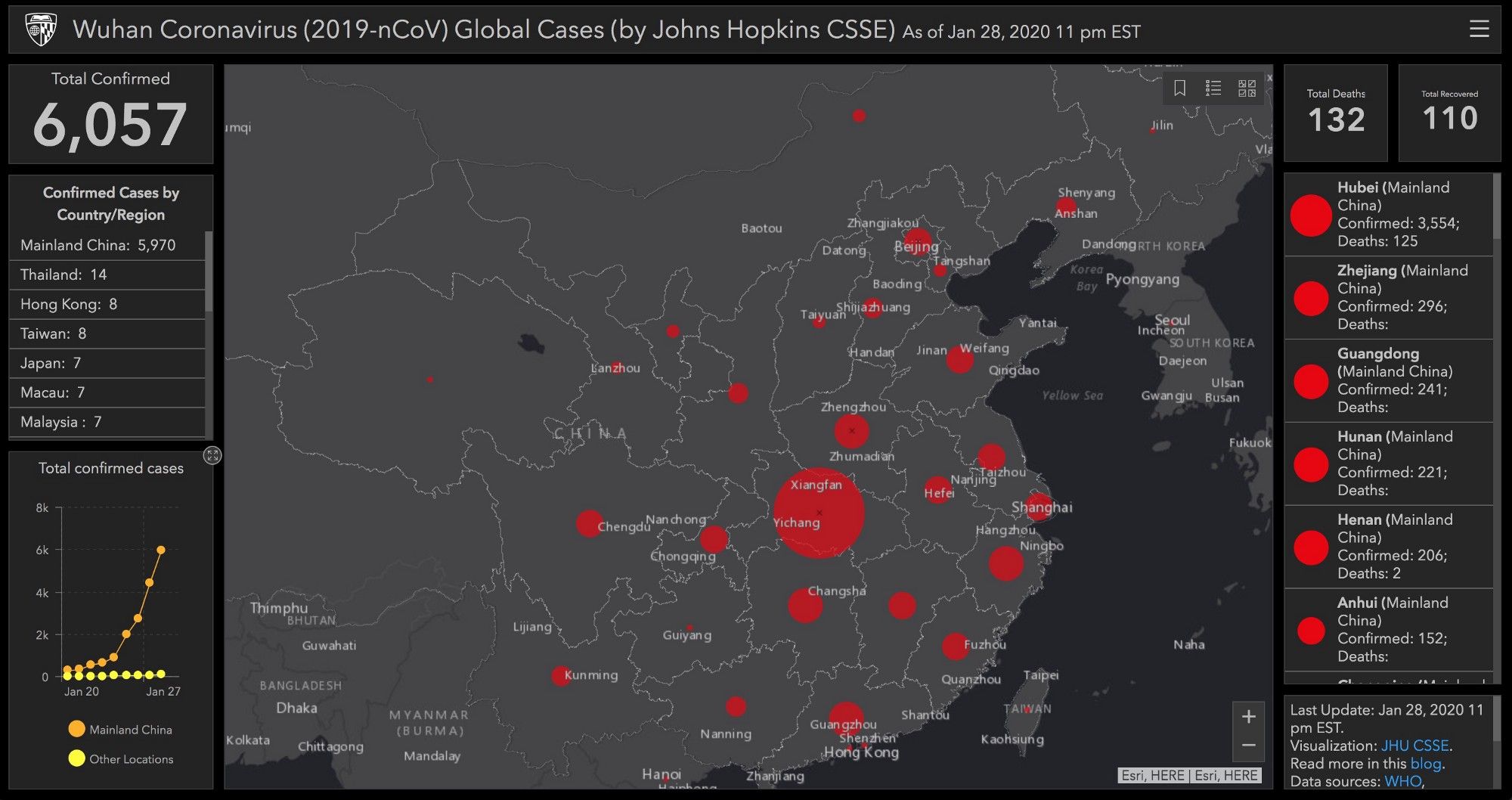What Scientists Say About The Coronavirus
A review of two recent studies

UPDATE: I wrote this at the beginning of the pandemic. There are many more studies now, but the key public health takeaway for more countries is to STAY HOME and practice social distancing until your country can get massive testing and social controls in place. Good luck. For the latest on the science check out STAT News.
Outside of WhatsApp University, there are two recently published studies on the Novel (Wuhan) Coronavirus, from brave and hard-working doctors and scientists within China itself. I’ve summarized the results, but the studies are short. I recommend reading them yourself.
I’ll refer to them as the Wuhan study and the Hong Kong study. They were published in The Lancet.
We Don’t Know The Source Yet
It was widely reported that ground zero was a seafood (and wildlife) market in Wuhan. That likely isn’t true. Both studies found patients who had no exposure to this market.
These are the results from 41 infected people in the Wuhan study:

This study showed that there were cases reported before the Huanan seafood market and that there were cases with no exposure to the market at all. It seems increasingly likely that the disease did not originate there.
In follow up reporting on this study, Daniel Lucey, an infectious disease specialist at Georgetown University, had this to say:
Lucey says if the new data are accurate, the first human infections must have occurred in November 2019 — if not earlier — because there is an incubation time between infection and symptoms surfacing. If so, the virus possibly spread silently between people in Wuhan — and perhaps elsewhere — before the cluster of cases from the city’s now-infamous Huanan Seafood Wholesale Market was discovered in late December. “The virus came into that marketplace before it came out of that marketplace,” Lucey asserts. (Science Mag)
The Hong Kong study was smaller but also showed patients with no connection to the market. They closely followed a Shenzen family of six patients who visited and then returned from Wunan. They did not visit the Huanan seafood market or consume wild meat. One relative did visit the regular wet market.
The sequencing of their samples showed a disease most closely connected to SARS, and bats.

Phylogenetic analysis of these five patients’ RT-PCR amplicons and two full genomes by next-generation sequencing showed that this is a novel coronavirus, which is closest to the bat severe acute respiratory syndrome (SARS)-related coronaviruses found in Chinese horseshoe bats.
Note that none of these results are conclusive and I recommend reading the results for yourself. What they do show is significant uncertainty around the reporting that this coronavirus came from animals and the Huanan seafood market.
It Seems To Hit The Lungs

As the figure from the Wuhan study above shows, more than half of the patients displayed difficulty breathing (dyspnoea). Of the 41 patients they studied, “abnormalities in chest CT images were detected among all patients”. This Novel Coronavirus seems to hit the lungs.
In reading both reports, what sticks out is the incidence of breathing problems. Both reference scary-sounding ground-glass opacities visible in lung scans. This is basically visible inflammation and fluid leakage, which presents as difficulty breathing. The bad patients had to go on mechanical respirators. Of the patients in the Wuhan study, six (15%) died. The overall mortality rate is so far much less, about 2.3%.
There May Be Asymptomatic Cases
The Hong Kong study is really the story of a family. It shows how this just happened to them. The Shenzen-based family took a trip to Wunan. One person visited a sick relative in hospital, and they all stayed with relatives. They started getting fever and diarrhea in Wuhan but didn’t go to the doctor until back home.
This family was understandably nervous and insisted on scanning their child, who was otherwise asymptomatic.
A rather unexpected finding from the lung CT scan of patient 5, which was done on the insistence by the nervous parents, also showed ground-glass pneumonic changes. Patient 5 was later confirmed virologically to have an asymptomatic infection.
These cryptic cases of walking pneumonia might serve as a possible source to propagate the outbreak. Further studies on the epidemiological significance of these asymptomatic cases are warranted. (Hong Kong Study, page 8)
This is one patient, but ‘walking pneumonia’ could mean that infectious people may not look sick. This, of course, makes containment more difficult. Note that this conclusion is not conclusive, it is yet disputed, including by Australian authorities.
Recommendations
The many authors of both studies obviously have experience with SARS and, to a lesser extent, MERS. This informs a lot of their comments.
Both SARS-CoV and MERS-CoV were believed to originate in bats, and these infections were transmitted directly to humans from market civets and dromedary camels, respectively. (Wuhan Study, page 8)
Hence, while there is doubt that the outbreak originated from the Huanan market, staying the hell away from wild animals seems to be recommended.
Learning from the SARS outbreak, which started as animal-to-human transmission during the first phase of the epidemic, all game meat trades should be optimally regulated to terminate this portal of transmission.
Beyond that, both studies point out the need for vigilance and more research. And at least the Hong Kong study expressed a view that this time was better than before.
Unlike the 2003 SARS outbreak, the improved surveillance network and laboratory capability of China was able to recognise this outbreak within a few weeks and announced the virus genome sequences that would allow the development of rapid diagnostic tests and efficient epidemiological control. (Hong Kong Study, page 9)
What Does This Mean For Me?
What the reports don’t comment on is the key question, which is will I get it? It seems that if you’re not handling wild animals or in Wuhan (or, God forbid, both) you’re still at low risk. However, in this age of nearly constant travel, the novel coronavirus has already spread across the globe, albeit in low numbers.

If you’re in China, however, the situation seems pretty bad. Effectively 35 million people are cut off in and around Wuhan. Though Chinese scientists did rush to analyze and understand this outbreak, it seems that the Chinese government suppressed the information for vital weeks, leading to a situation where entire regions are put under a blunt and brutal quarantine.
Still, for the vast majority of us, this remains academic information. We can learn about the Wuhan coronavirus but we will not, inshallah, encounter it. We remain under more threat from the flu, or crossing the road. For now, scientists are studying this virus, doctors are fighting it, and the rest of us don’t have to do anything besides not forwarding dumb WhatsApp messages.
The Wuhan Study: Clinical features of patients infected with 2019 novel
coronavirus in Wuhan, China. Chaolin Huang, Yeming Wang, Xingwang Li, Lili Ren, Jianping Zhao, Yi Hu et al.
The Hong Kong Study: A familial cluster of pneumonia associated with the 2019 novel coronavirus indicating person-to-person transmission: a study of a family cluster. Jasper Fuk-Woo Chan, MD, Shuofeng Yuan, PhD, Kin-Hang Kok, PhD, Kelvin Kai-Wang To, MD, Hin Chu, PhD, Jin Yang, MD et al.